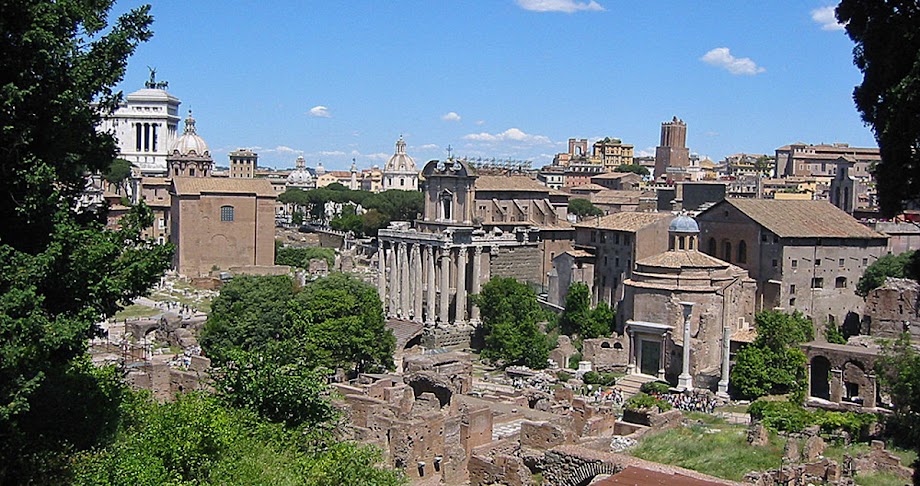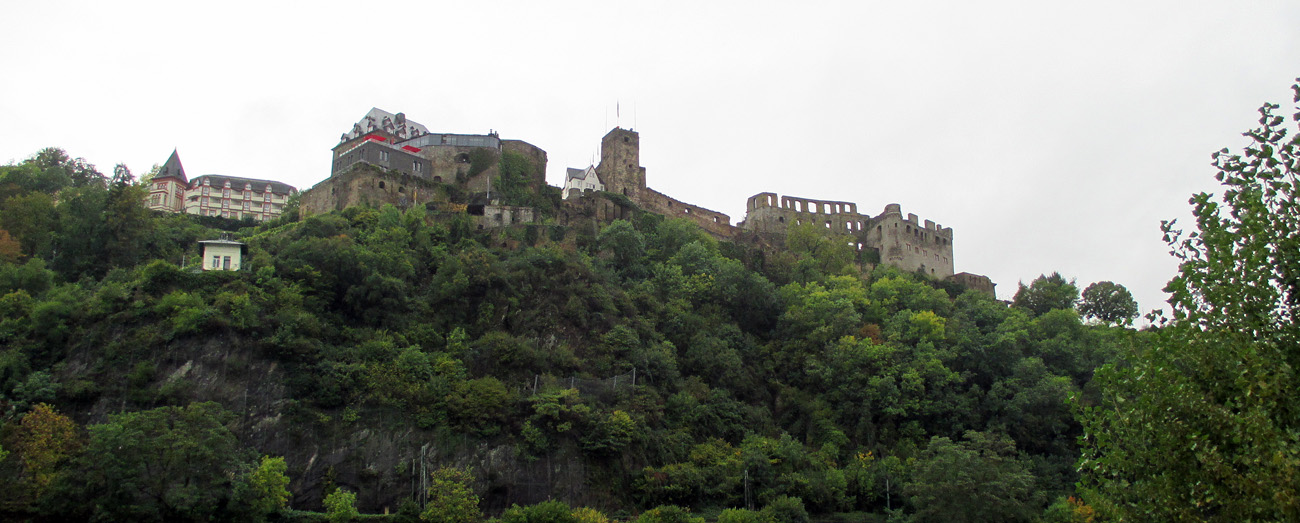First, Dottore Gianni insists that I thank Professor Hoffman (with no disrespect I'll refer to him simply as "Hoffman" from here in) and that I apologize to him, because I'm not at all certain that I can convey his thoughts adequately, or do justice to his presentation. However, his lecture so enlivened me that I want to share as much as I can of the talk with my dear readers.
I knew Hoffman only on the South Carolina NPR station as I listen to "A Minute with Miles," brief vignettes (lasting only as his title indicates - one minute), of wit and wisdom regarding classical music. To exemplify these "minutes" I would offer a summary or two. But while driving in my car listening to Morning Edition I do not usually take notes - fortunately for me and anyone else in a nearby vehicle! Also, alas, my memory is gradually slipping away and I simply don't remember any. You can find these musical moments by googling him, if you like - and I think you WILL like.
 |
| Miles Hoffman, plucked from the web - photo by Mary Noble Ours |
"Bach Was Handsome Once" began as Hoffman read several quotations from important artists and thinkers on Bach, stressing his brilliance. I'll confess that I cannot take notes fast enough to have got most of them, so I looked up famous quotations about Bach and offer you two examples below.
Gustav Mahler: "In Bach the vital cells of music are united as is is the world in God."
Johann Wolfgang von Goethe: "...it [Bach's music] is as if the eternal harmony were conversing within itself, as it may have done in the bosom of God just before the creation of the world."
As you see, Mahler, Goethe and others speak of Bach as a legend, above mere mortals. Then, when Hoffman finished quoting, he asked us (here and throughout I am paraphrasing), "But what about Bach as a human being? This we forget." Hoffman next made one of the most important points, for me at least, in his lecture: "Everything about his music begins with that." With his "human-ness," his humanity, not with his status in the minds of many as a demigod!
 |
| The standard portrait of Bach, painted in the late 1740s |
Hoffman then reminded us of the primary portrait by which Bach is known. It offers us the legendary Bach: an old, puffed up, be-wigged genius. But Hoffman had access in Germany once to files on Bach and found a drawing of him as a young man. "And he was handsome!"
 |
| Bach as a young man. This is not a verified portrait, but it was painted more 20 years earlier, and yes, in this he IS handsome...sort of... |
Hoffman reminded us that music expresses passions, and that Bach WAS passionate, in his life and in his music.
He spoke of Bach's vast amount of religious music and pointed out that while Bach may seem to us as very religious, given his huge output in that genre. Then Hoffman noted that his composing worked a bit like grace before dinner, followed by the dinner itself. Many people start their meals this by saying grace, but once they tuck into the food they are not thinking about religion. They are thinking about the food - how it tastes, how the wine goes with it, and so on. Religious or not, when Bach wrote he was making not religious choices, but musical choices. It is the music that contains the meaning, not the words from scripture that he set to music.
Hoffman focused next on his music. Bach speaks in music, he said, and suggested that we think of the music as speech more than song, as musical rhetoric rather than a pretty melody. Later composers (Mozart is an example) proceeded from melodies, not Bach. It is rather easy to whistle Mozart. It's very hard to whistle Bach!
A reminder that I am paraphrasing Hoffman, it's the best I can do, and while it may not complete, or even accurate, I'll proceed with a stream of it:
We all say "I love Bach." But how often do we wonder, "What did Bach love?" WE love music, Well, BACH probably loved it too! That's what comes across when we listen to it. But Bach is not easy. People ask, what does he "mean" in the music? We don't know that, we can't know what he was thinking. Later composers began with melodies. We did too, when we were little, with simple songs, and our brains are geared for that. Mozart offers us a melody, to begin with. Relatively speaking, that's easy for us.
Instead of beginning with a melody, however, Bach establishes a pattern...and then he takes the pattern somewhere else, he takes us on a journey. We may not always know where we are, or where Bach is going, we just know that we are on a journey. Bach speaks music!
Then Hoffman took out his viola and, having introduced us verbally to patterns and the almost endless variations on those patterns, the journey that Bach takes us on, he PLAYED. He played, beautifully, four dances from the C Major Suite No. 3 of Bach's "Six Suites for Unaccompanied Cello." On a viola? Why not? Hoffman explained to us that the only difference between a cello and a viola, except of course for size and position, is one octave. Anything you can play on a cello you can also play on a viola, just an octave higher.
Sidebar: I'm listening to the third suite as I write this - played on cello, by Yo-Yo Ma...aaaahhh...
After he played one of the dances that make up the suites , Hoffman reminded us of the patterns, and the variations on the patterns, and to illustrate he played very brief bits from the full dance he had just performed to show how Bach began the journey, continued on his way creating variations on the patterns and returned to the primary pattern.
Hoffman briefly discussed the dances that except for the first section, the Prelude, make up the five remaining sections of each suite. He reminded us that Bach did not write these suites for dancers, and in fact some of the dances were already out of fashion by the time Bach wrote the suites. The order in Suite No. 3 is: Allemande, Courante, Sarabande, then galanterie, in this suite a Bourrée, and finally a Gigue.
 |
| An Allemande - do remember that these suites were not danced - I just wanted a visual here! |
A quick note: I looked the dances up on line for more information: Galanteries are sections that not necessary to the piece, but that complement the other parts and that typically precede the final Gigue. Bach used the Bourrée in No. 4 as well. In Suites 1 & 2 he chose minuets, and in Suites 5 & 6, gavottes.
In the final words Hoffman spoke on the suites he noted that coming back to a musical pattern is very different from hearing it for the first time. And, having benefited from his musical demonstration I can affirm that he was SO right.
I am pleased to say that I don't usually find myself getting lost or confused when listening to Bach, but I admit that I could never have told you why. Perhaps the concept of beginning with a pattern, taking it (and the listener) on a journey, and returning to it, simply makes sense to me, but I hadn't realized that. Understanding in more detail what Bach was "about" if you will, made clear to me music I already loved, and the journey on which Bach was taking me every time I listened to his music. I think (and Dottore Gianni confirms) that one always gets more out of a piece of music or any art when one knows more about it than s/he once had. I left the lecture in a little bit of heaven!
Whoops! I shouldn't have have written that last phrase! Bach wrote not from heaven, but very much from here on earth - one of the main points of the lecture! But Bach had a combination of skill and love for the music - a passion for it - that is, well...to me at least, damn it...heavenly! So I went home and played Bach all afternoon.
Sorry, Miles Hoffman, I did not, do not, have the words to do justice to that wonderful lecture/demonstration. But I thank you so much for it. I'm very lucky to have been in that room with you on a rainy Friday morning!



%2C%2Btaken%2Bfrom%2Btrain%2B8%2BOct%2B14.jpg)






























.jpg)
